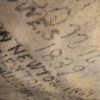Many iconic structures have defined the permanent urban landscape of the United States — including the Empire State Building, Golden Gate Bridge and Washington Monument as only three of many examples…
Illustrations of 7 Buildings Never Constructed in the United States
…but despite the reputation of the country as being the land of opportunity, did you know that some of the grandest architectural projects in the United States — which could have redefined what the skylines of cities would look like today — were never built?
Architects viewed cities as virtual blank canvases, waiting to have an identity stamped upon them with their signature styles — but in the rush to stake a claim, not every voice is heard above the din. Whether or not the reasons were justified, countless blueprints have been consigned to history and hidden away with their structures never to have been built — perhaps because some of the projects were considered too ambitious or too avant-garde or or too controversial to construct — or maybe finances simply became unavailable.
This article from NetCredit uses information from archives — especially those of The Library of Congress in particular — and modern imaging techniques to create a series of illustrations of what seven cities in the United States would look like today had their most exciting unrealized blueprints become reality in the forms of steel, glass, and concrete.
I have been given express written permission to use the images and the verbatim text from the aforementioned article in this article; so let us take a break from the news of the day and have a little fun.
What New York Could Have Looked Like: Lower Manhattan Expressway
Some unbuilt plans are inarguably, impossibly utopian. But Robert Moses’ proposal for a Lower Manhattan Expressway (LOMEX) through the heart of NYC was either a dynamic vision of the future or an uncompromising act of community-destroying gentrification, depending on how you saw it. Moses – a long-term figure on New York’s city planning scene – was notoriously pro-car (he never invested a dime in mass transit) however his visionary elevated highway never got to run through Greenwich Village, SoHo, and Washington Square Park as planned.
Due to the campaigning of journalist and activist Jane Jacobs, over 800 businesses and 2000 families were saved from displacement. Moses’ proto-Brutalist structure, flanked by stepped living and working towers, would certainly have been of architectural interest, but this time human interest won the day.
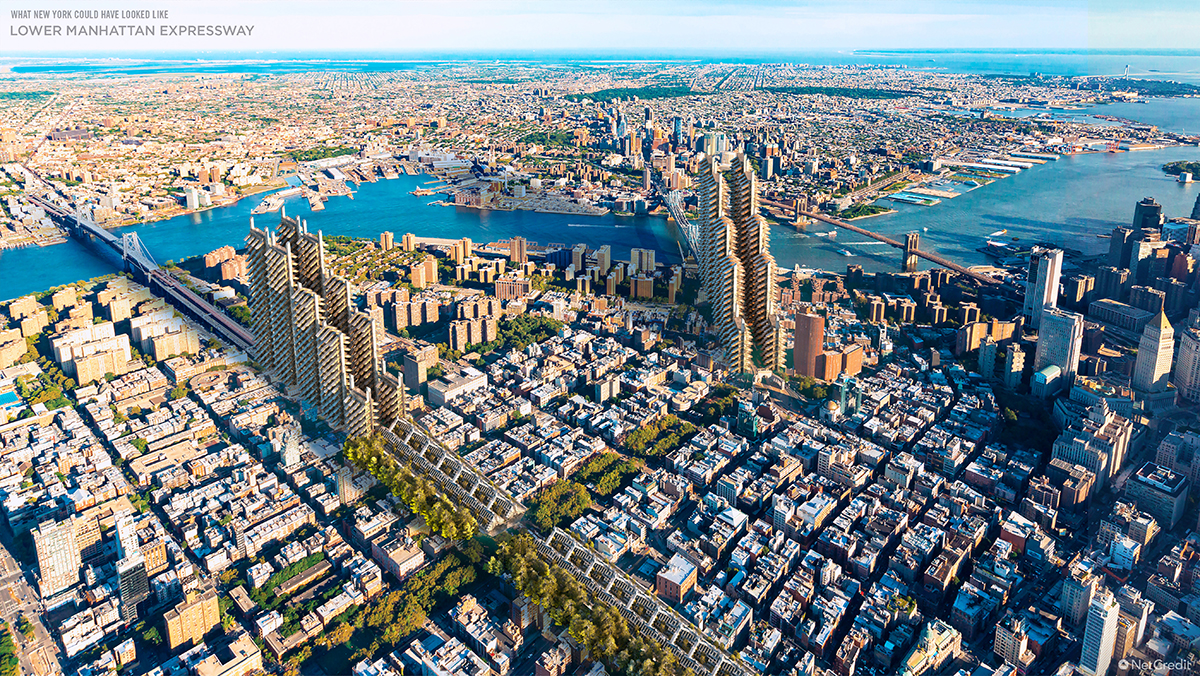
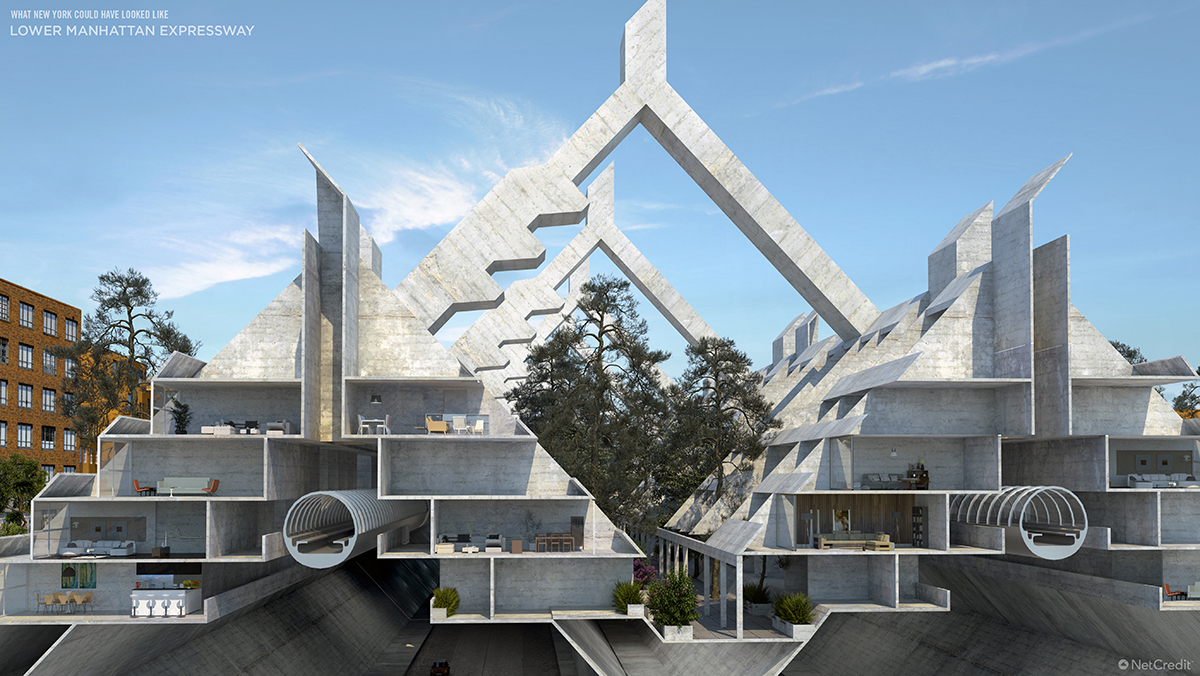
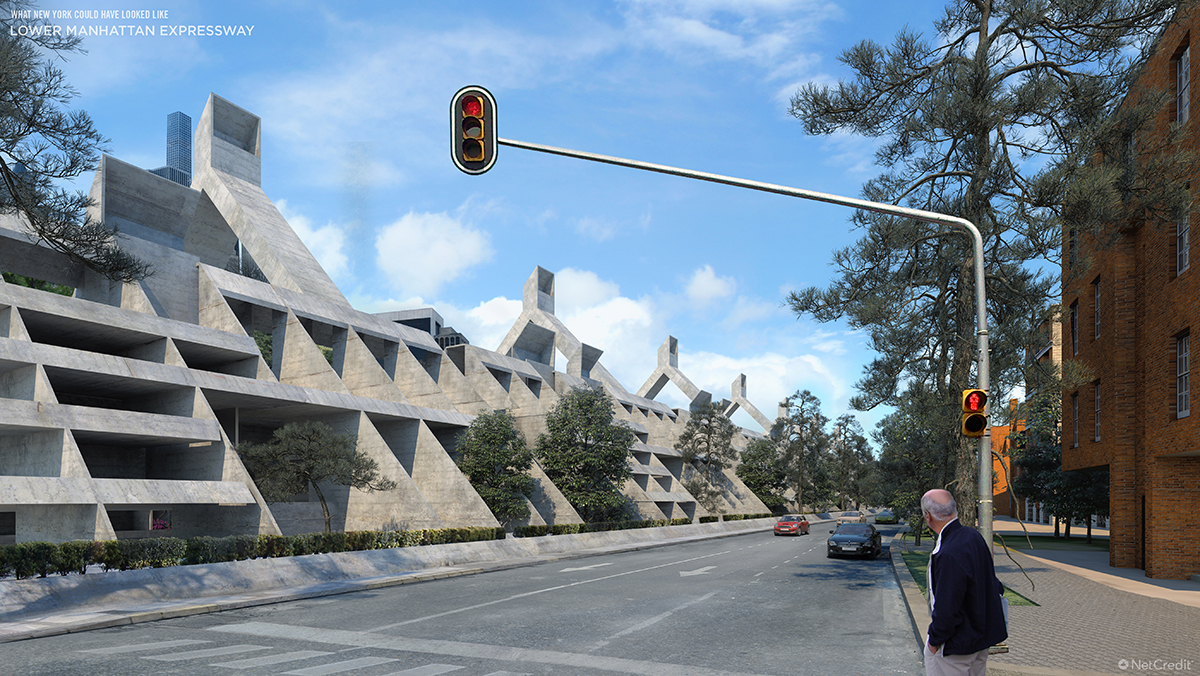
What San Francisco Could Have Looked Like: Golden Gate Tidal Energy Farm
Marc L’Italien came up with a wholly idealistic plan to make better use of Frisco’s landmark Golden Gate Bridge: back in 1990, he proposed to transform the bridge into a tidal energy farm and desalination farm. Each existing pylon would have been adapted and built upon, with hydroelectric turbines sunk deep beneath the surface to put the structure to work creating green energy for the city as well as a supplementary source of drinking water.
In today’s climate of extreme weather and wildfires, this additional source of salt-free firefighting water (saltwater damages plant life and equipment) would have been a welcome innovation, even if the Golden Gate had looked a little less dainty with a factory attached to it.
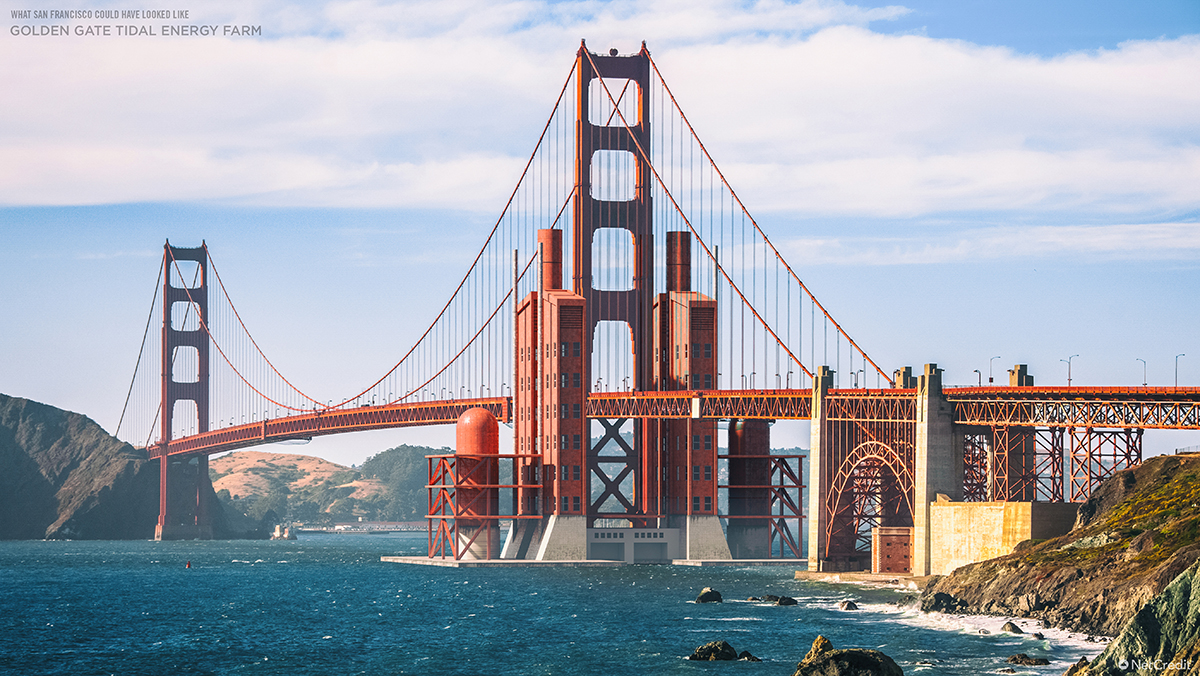
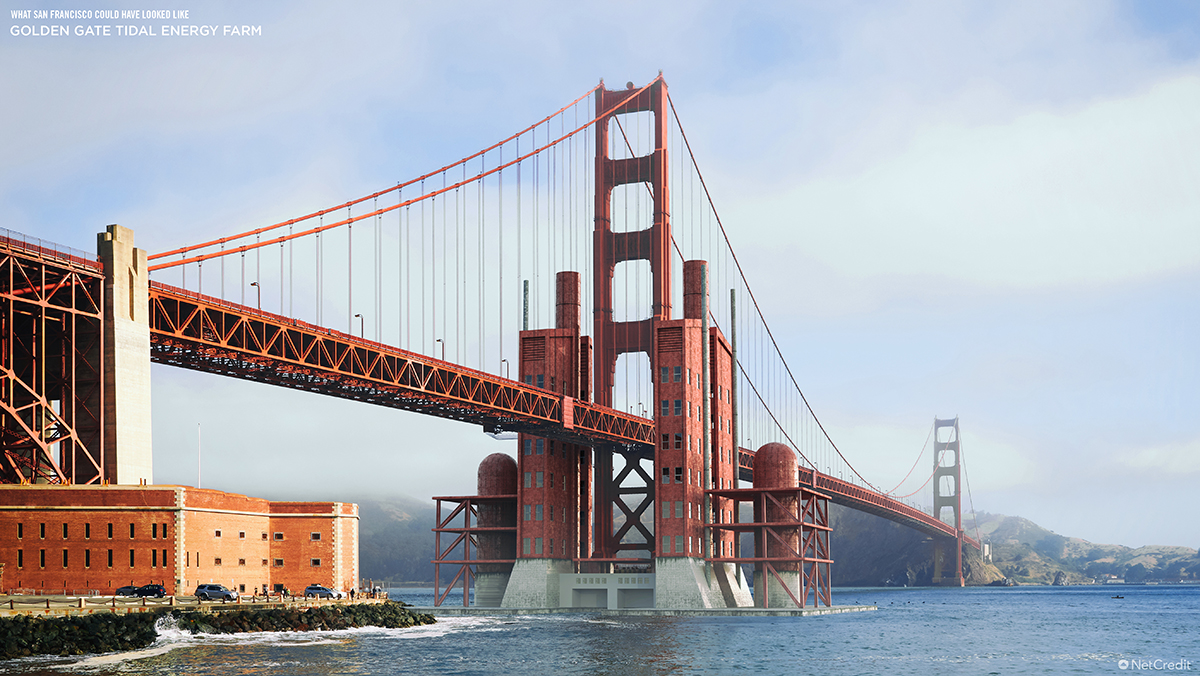
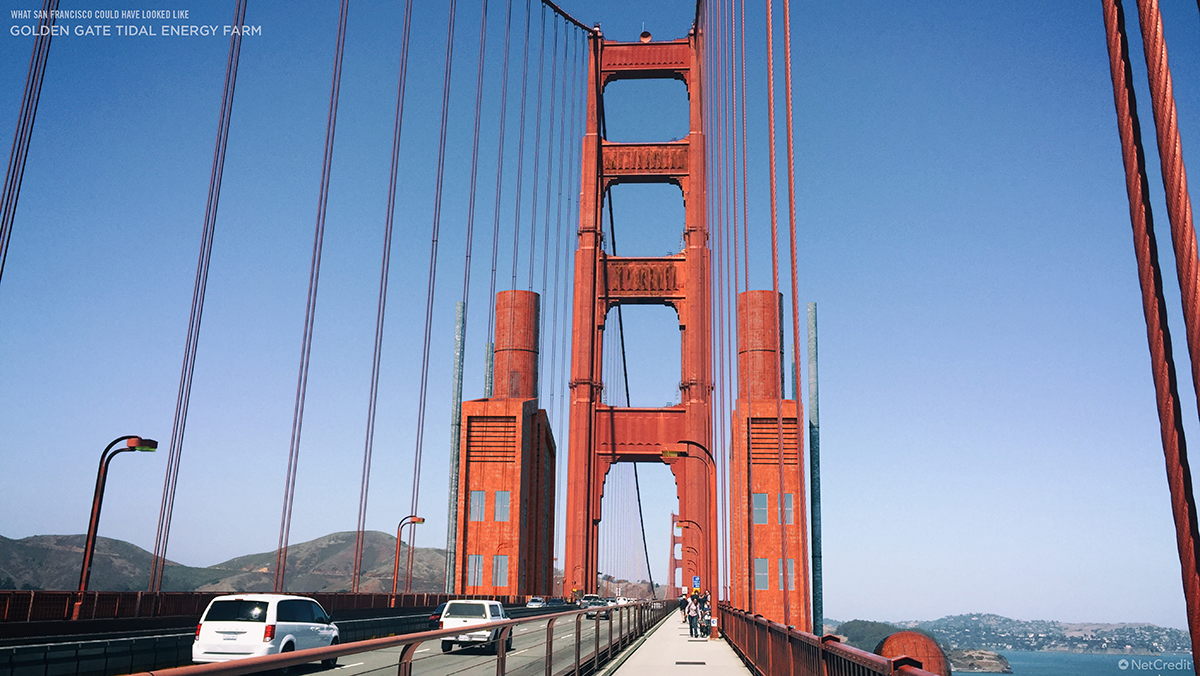
What Chicago Could Have Looked Like: National Life Insurance Building
The legendary Frank Lloyd Wright attempted to reboot the skyscraper and his own career with his sketches for a cathedral-like National Life Insurance Building on Water Tower Square. By cantilevering the floors of the four transepts off reinforced concrete pylons, he would have freed up the building’s walls from bearing the structure’s weight, so that they might “cease to exist as either weight or thickness.”
Skinny walls make for increased office space (particularly since his ‘democratic’ approach did away with pompous show areas and hallways) and, supposedly, render the structure earthquake-proof – a fair claim, since Wright’s Imperial Hotel just about survived the massive Tokyo ‘quake of 1923. However, it seems the building was too ambitious an engineering feat to complete at the time.
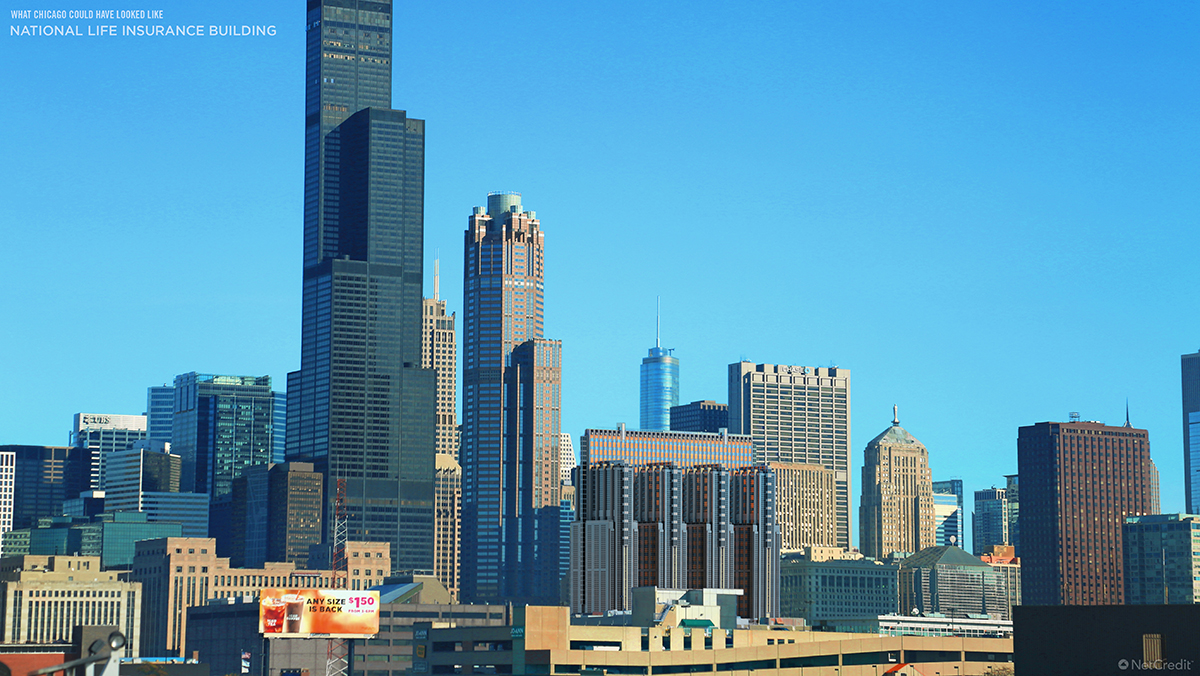
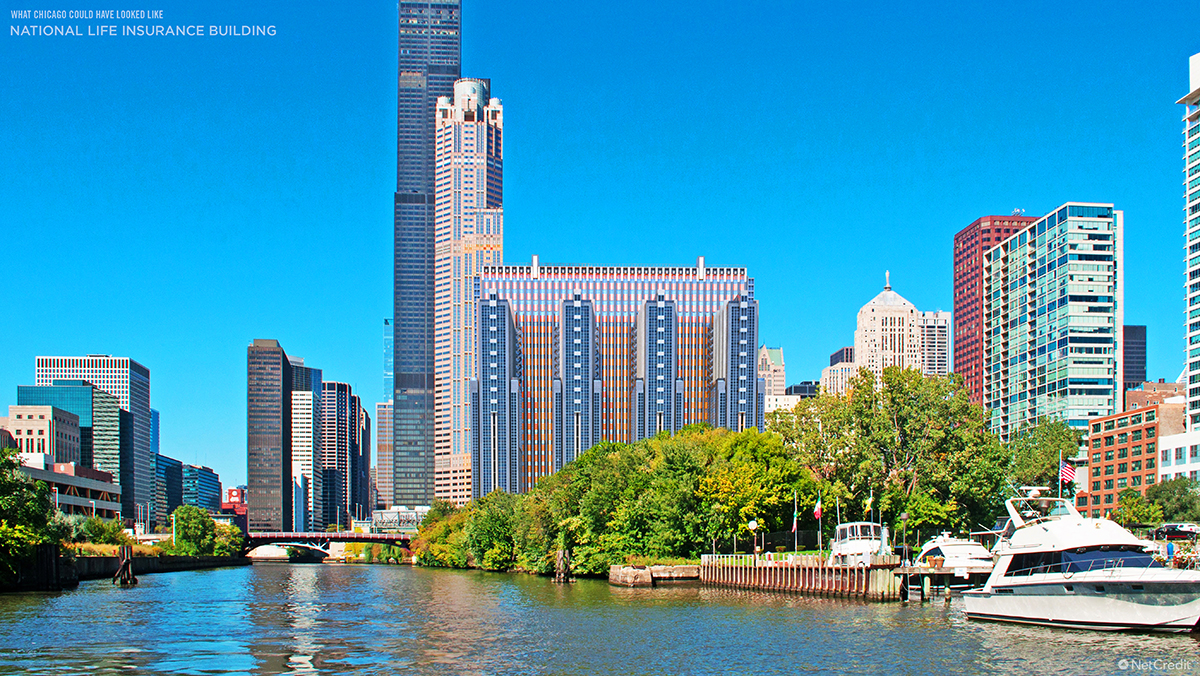
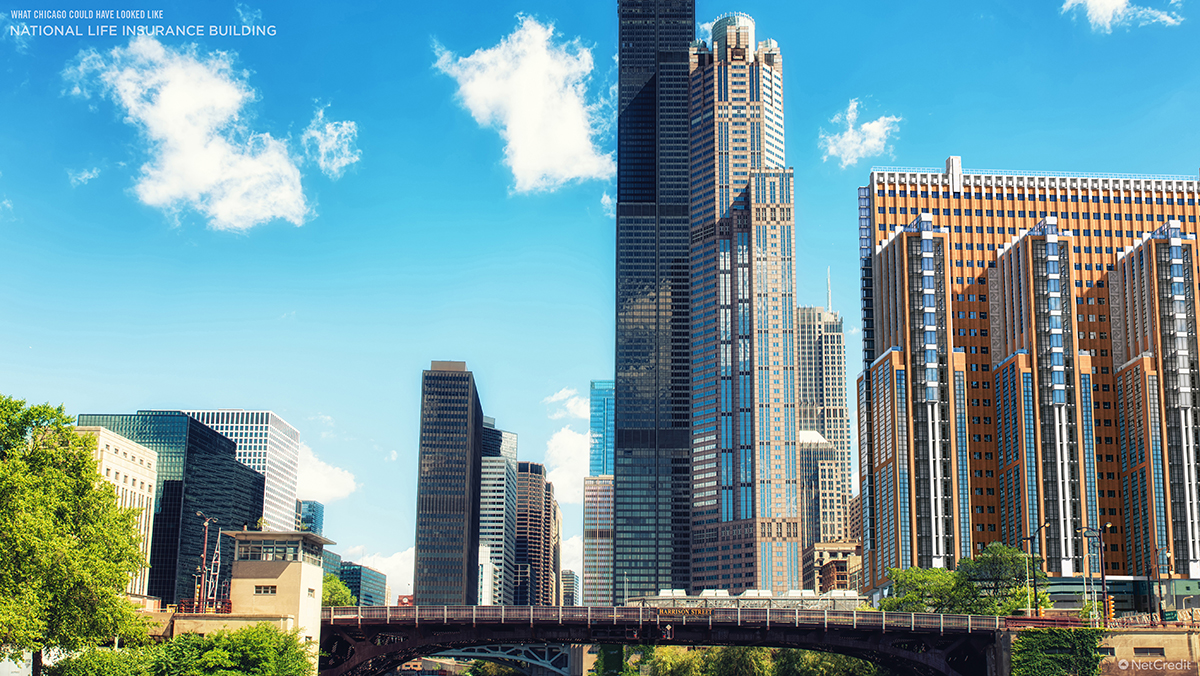
What Seattle Could Have Looked Like: Beaux Arts Civic Center
While the Space Needle may be Seattle’s signature landmark today, a century ago city planners imagined a much more horizontal city in response to New York’s ostentatious skyscrapers. Marvelously-named civil engineer Virgil Bogue was invited to rethink the city center, and he proposed grids of verdant boulevards radiating out from a Beaux Arts Civic Center at Fourth and Blanchard.
A rail service ducking below and above ground and a road tunnel beneath Lake Washington were to have kept the city moving, and Mercer Island would have become one big park. Sadly for Bogue, the city’s residents were wary of their homes and businesses being eaten up by such an expansive redevelopment, and the project was flushed in 1912.
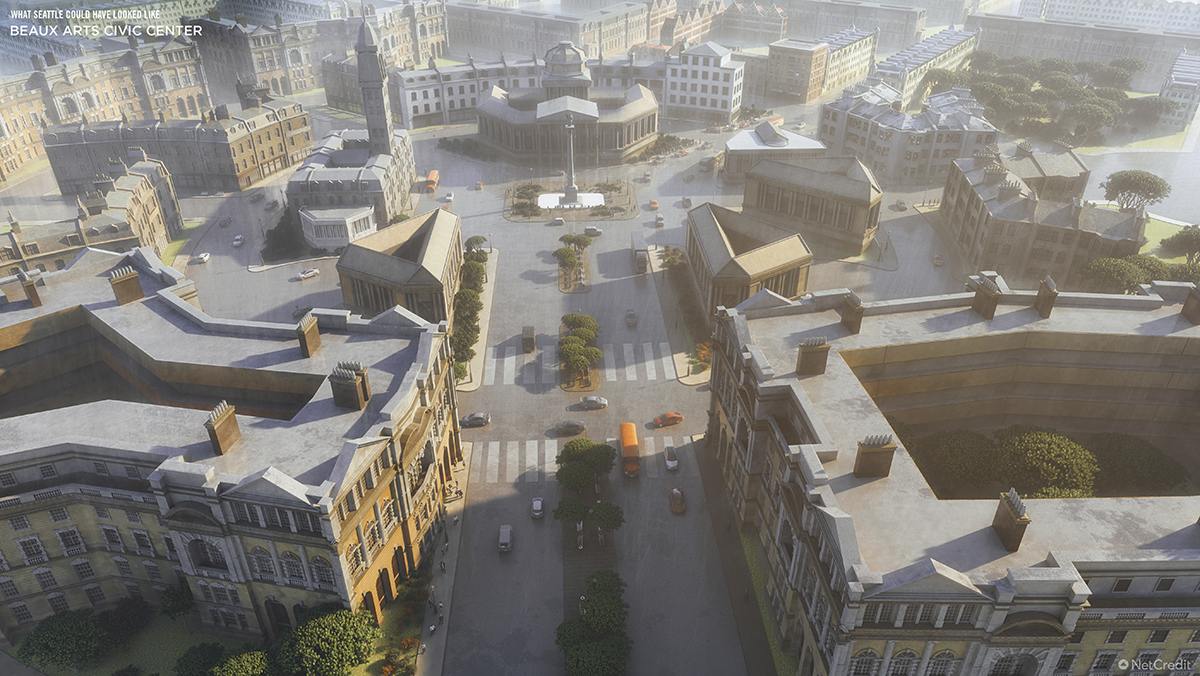
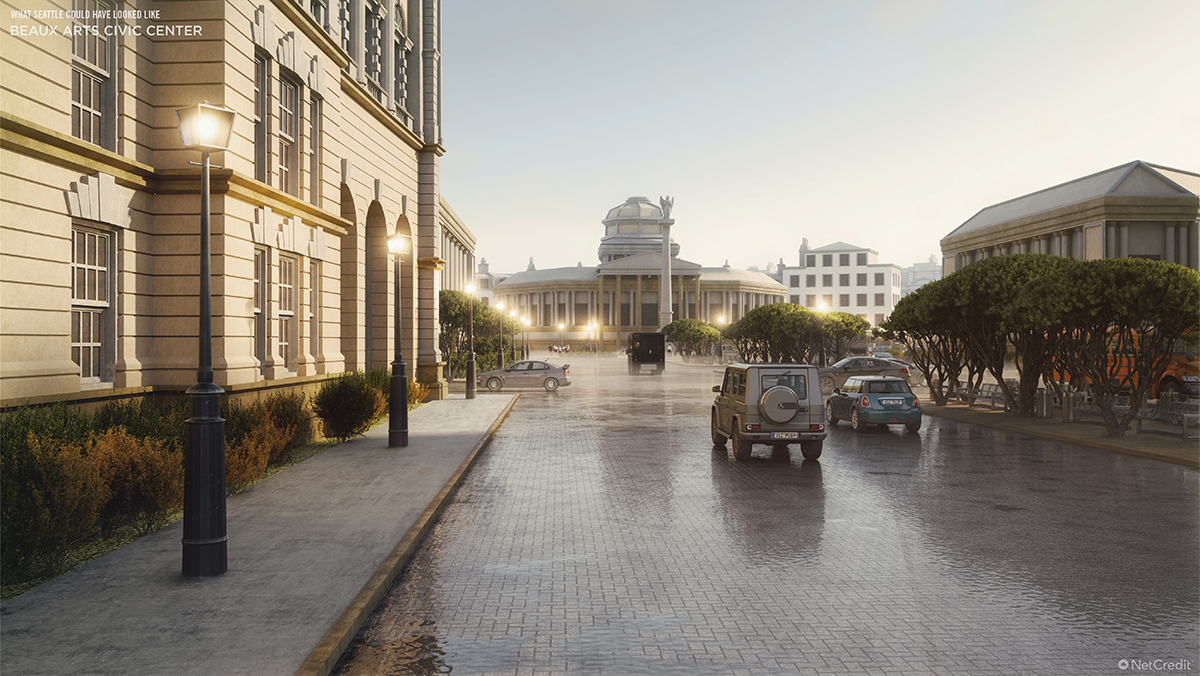
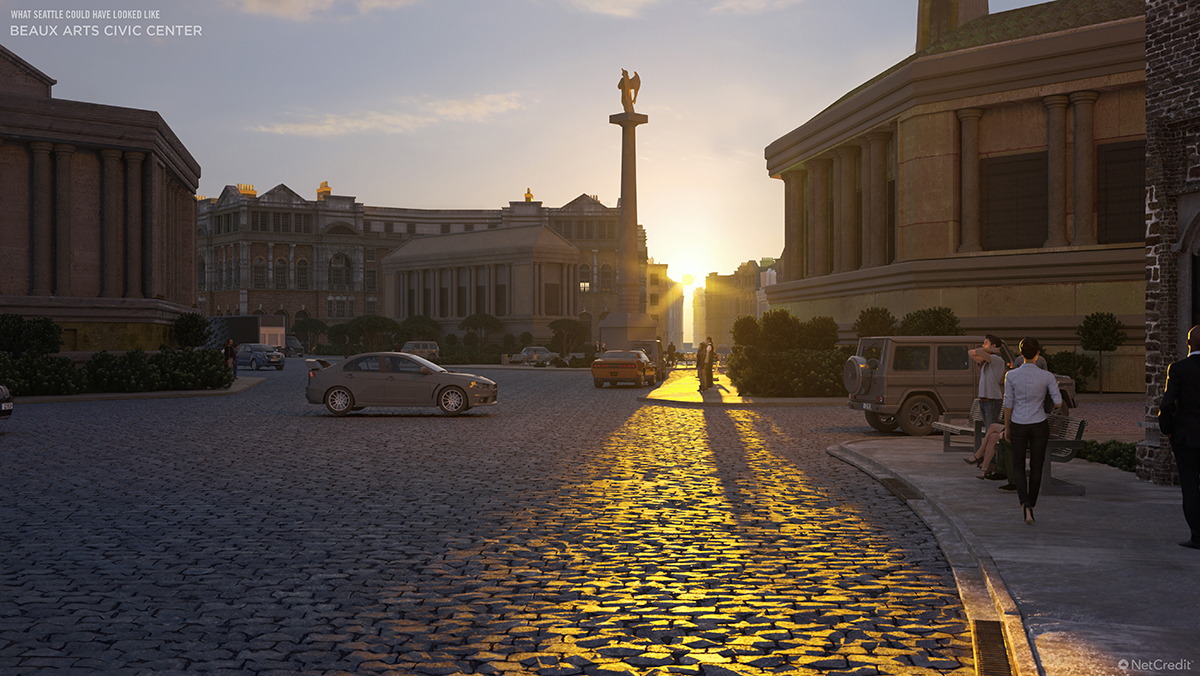
What Los Angeles Could Have Looked Like: Spring Street Civic Center
“I saw [Frank Lloyd Wright’s] plans for LA,” wrote Anaïs Nin, twenty years after the famous architect’s failed bid to build a new Civic Center blossoming out from Spring Street: “it could have been the most beautiful city in the world.”
Wright borrowed the best of the future and the past for his vision of a Mayan Revival mega-complex complete with metro-system and helicopter landing pads. It would have featured government buildings connected all the way up a 500-foot wide terraced walkway on Bunker Hill to City Hall. “If his plans had been carried out,” Nin concluded, “the world would have been dazzled by them.”
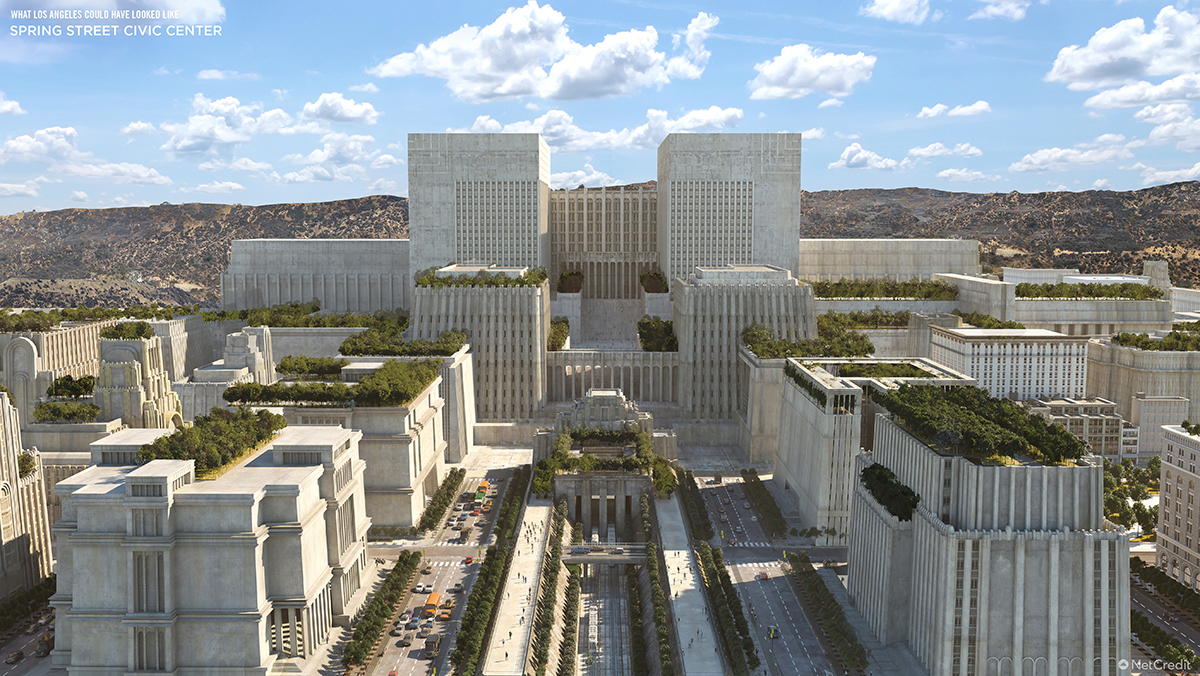
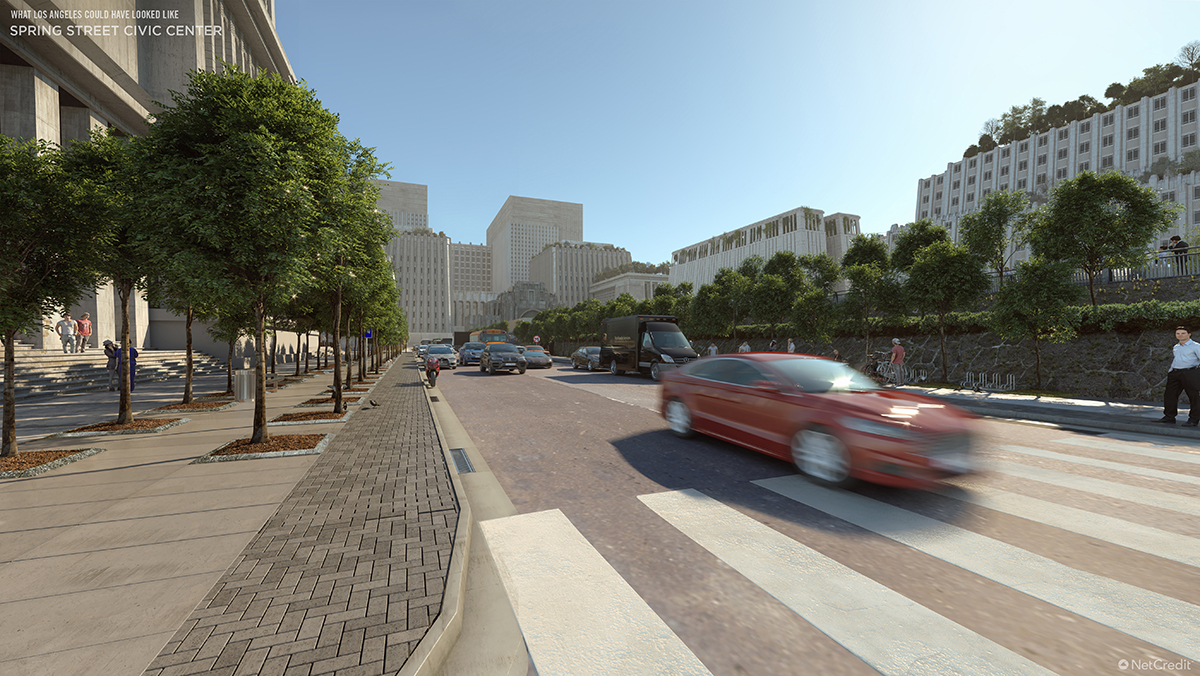
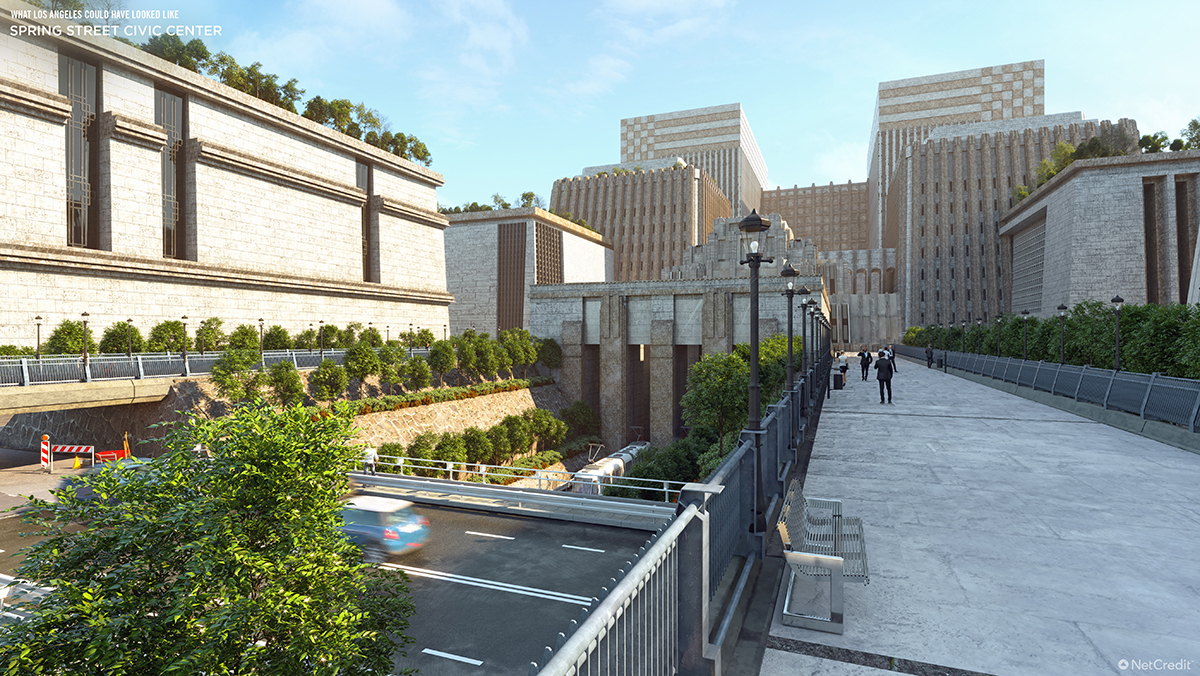
What Houston Could Have Looked Like: The Bank of the Southwest Tower
In 1982, Helmut Jahn’s “romantic modernist” skyscraper won a competition to build Houston’s tallest building. Intended to be “something that would enable people flying over the city to say, that’s Houston,” ironically The Bank of the Southwest Tower was found by the Federal Aviation Administration to be a hazard to those same passing aircraft.
The economic downturn caused by an oil bust that occurred soon after put the final nail in the coffin of the $400m project. The rocket-like structure was to have been clad in glass and granite and to feature a 79th-floor observation deck. An older tower even demolished to make way for the city’s new landmark, but today it’s just a street-level parking lot.
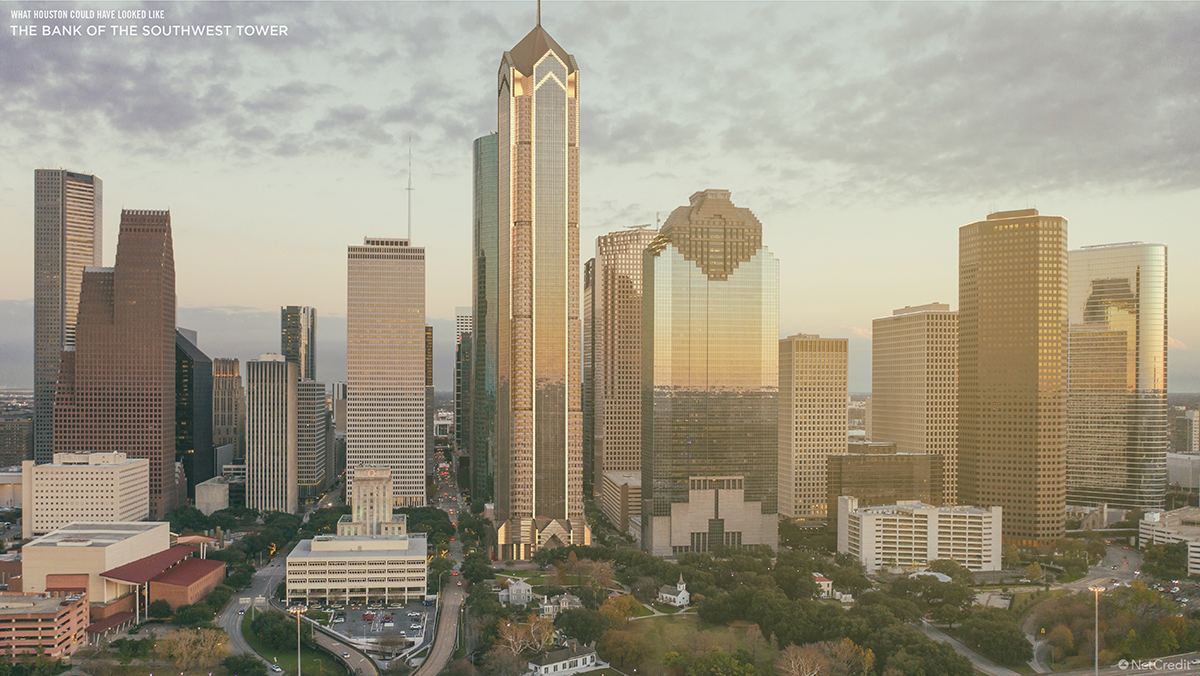
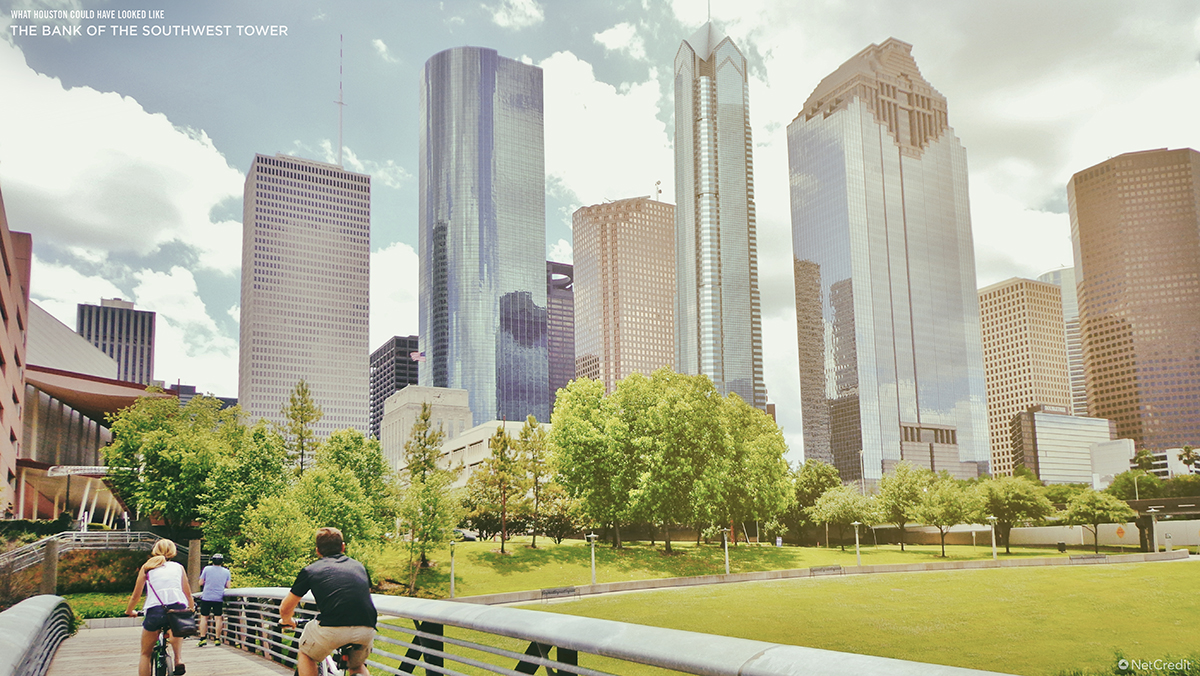
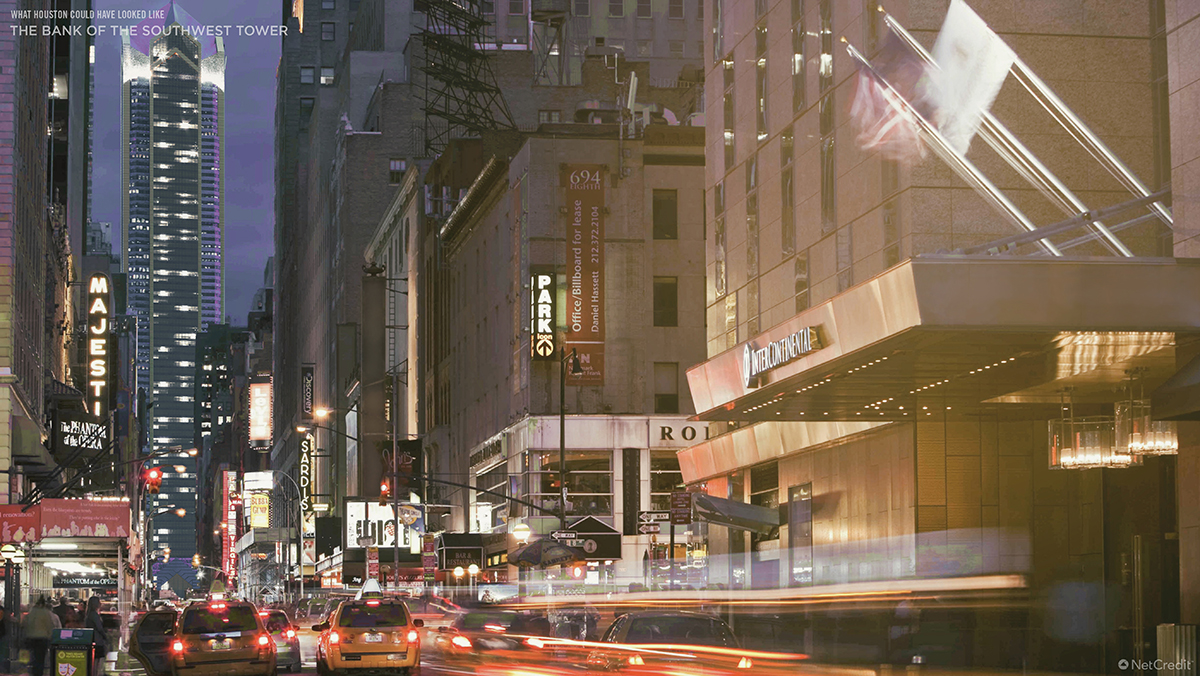
What Newport Could Have Looked Like: Millennium Freedom Tower
The parking lot at Fourth and Monmouth in Newport remains a limbo spot since plans for the city’s all-singing, all-dancing Millennium Freedom Tower failed to materialize in time for the turn of the century. From a distance, the tower would have become Newport’s answer to the Eiffel Tower, but up close was where the action really started: a theme park-style ride to the top of the 600ft building was set to become the world’s tallest free-fall ride, a record-breaking carillon was promised lower down, with restaurants, visitor gardens, and tower lights.
With the deadline long past, the area seems to have descended into development hell. The land is privately owned and nothing much is happening atop the pile-driven foundations that proved to be as high as the tower would reach.
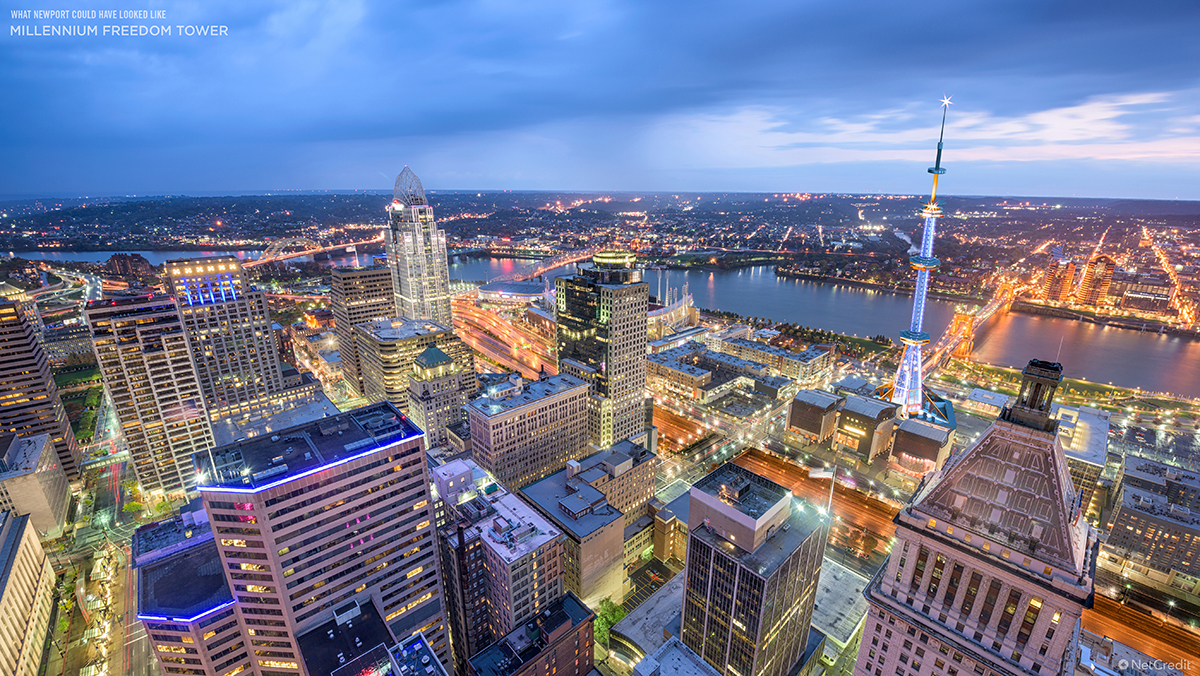
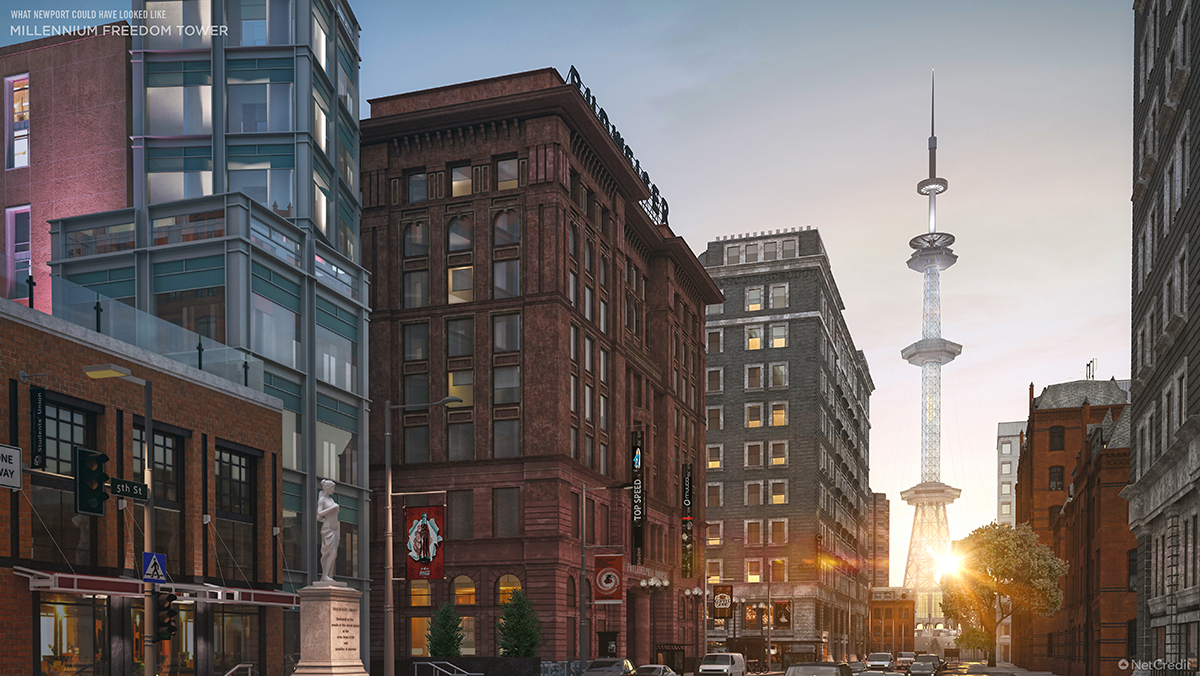
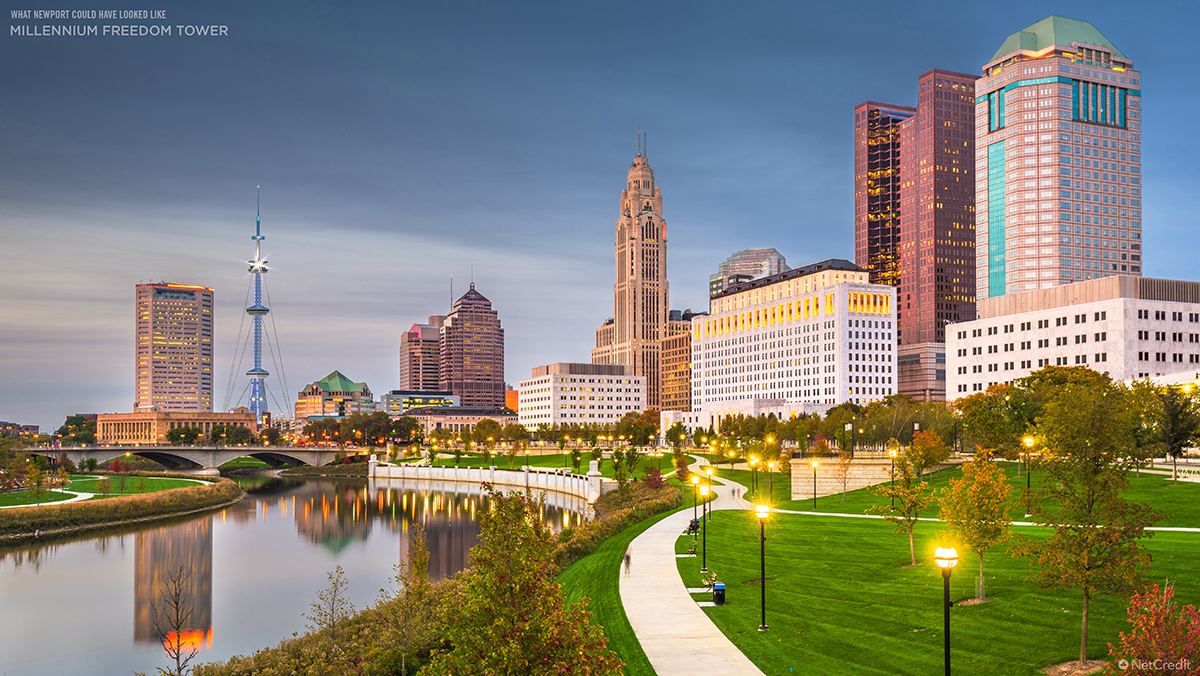
Summary
One can be amazed at the myriad factors which determine which major projects get the green light to be built — and which ones never become reality.
Although I believe that more rapid transit lines may be the answer, I do wonder if the construction of the Lower Manhattan Expressway would have helped to avoid the proposal of charging a toll for motorists simply to enter the area of Manhattan south of East 60 Street and West 60 Street, which may become effective sometime in December of 2020, according to this article written by Lauren Cook for amNY.com…
…but upon a second look at the illustrations, Katz’s Delicatessen may have been forced to relocate or close altogether…
Photograph ©2015 by Brian Cohen.

